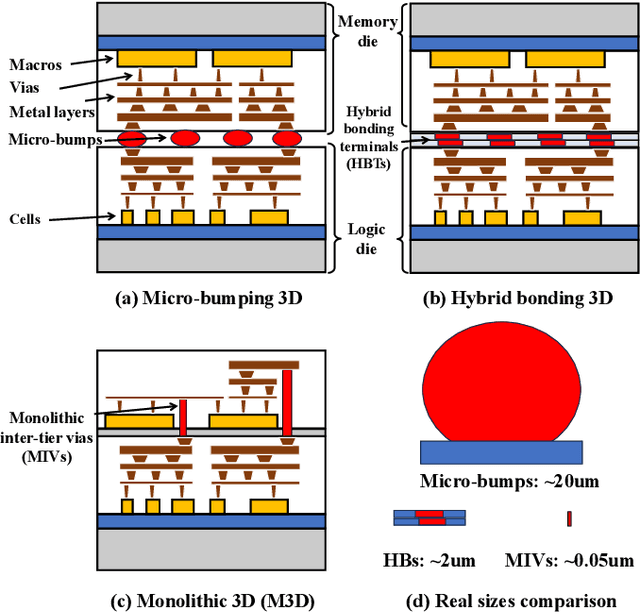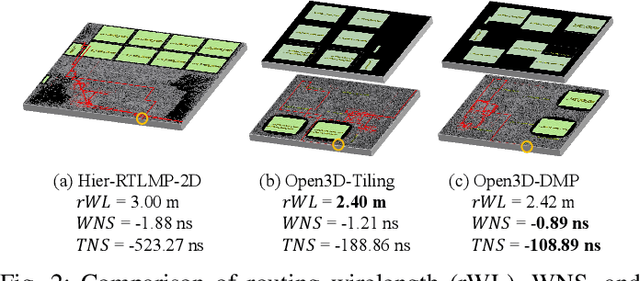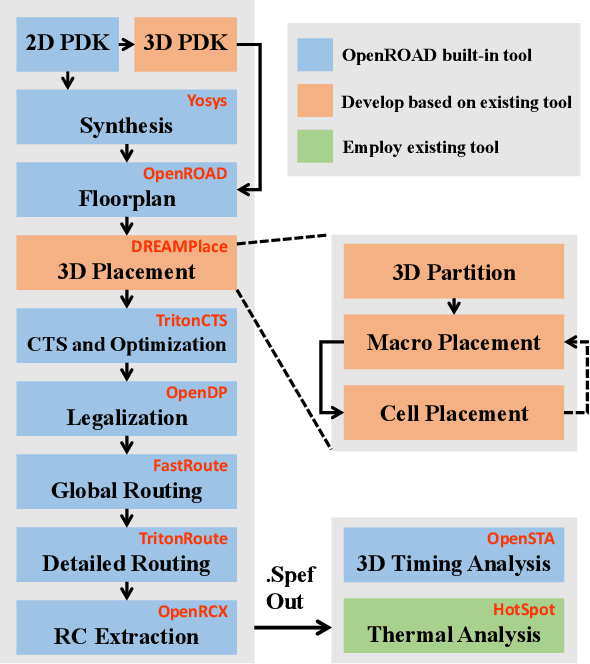Zhi-Hua Zhou
TreeLoRA: Efficient Continual Learning via Layer-Wise LoRAs Guided by a Hierarchical Gradient-Similarity Tree
Jun 12, 2025Abstract:Many real-world applications collect data in a streaming environment, where learning tasks are encountered sequentially. This necessitates continual learning (CL) to update models online, enabling adaptation to new tasks while preserving past knowledge to prevent catastrophic forgetting. Nowadays, with the flourish of large pre-trained models (LPMs), efficiency has become increasingly critical for CL, due to their substantial computational demands and growing parameter sizes. In this paper, we introduce TreeLoRA (K-D Tree of Low-Rank Adapters), a novel approach that constructs layer-wise adapters by leveraging hierarchical gradient similarity to enable efficient CL, particularly for LPMs. To reduce the computational burden of task similarity estimation, we employ bandit techniques to develop an algorithm based on lower confidence bounds to efficiently explore the task structure. Furthermore, we use sparse gradient updates to facilitate parameter optimization, making the approach better suited for LPMs. Theoretical analysis is provided to justify the rationale behind our approach, and experiments on both vision transformers (ViTs) and large language models (LLMs) demonstrate the effectiveness and efficiency of our approach across various domains, including vision and natural language processing tasks.
Learnware of Language Models: Specialized Small Language Models Can Do Big
May 19, 2025Abstract:The learnware paradigm offers a novel approach to machine learning by enabling users to reuse a set of well-trained models for tasks beyond the models' original purposes. It eliminates the need to build models from scratch, instead relying on specifications (representations of a model's capabilities) to identify and leverage the most suitable models for new tasks. While learnware has proven effective in many scenarios, its application to language models has remained largely unexplored. At the same time, large language models (LLMs) have demonstrated remarkable universal question-answering abilities, yet they face challenges in specialized scenarios due to data scarcity, privacy concerns, and high computational costs, thus more and more specialized small language models (SLMs) are being trained for specific domains. To address these limitations systematically, the learnware paradigm provides a promising solution by enabling maximum utilization of specialized SLMs, and allowing users to identify and reuse them in a collaborative and privacy-preserving manner. This paper presents a preliminary attempt to apply the learnware paradigm to language models. We simulated a learnware system comprising approximately 100 learnwares of specialized SLMs with 8B parameters, fine-tuned across finance, healthcare, and mathematics domains. Each learnware contains an SLM and a specification, which enables users to identify the most relevant models without exposing their own data. Experimental results demonstrate promising performance: by selecting one suitable learnware for each task-specific inference, the system outperforms the base SLMs on all benchmarks. Compared to LLMs, the system outperforms Qwen1.5-110B, Qwen2.5-72B, and Llama3.1-70B-Instruct by at least 14% in finance domain tasks, and surpasses Flan-PaLM-540B (ranked 7th on the Open Medical LLM Leaderboard) in medical domain tasks.
Theoretical Investigation on Inductive Bias of Isolation Forest
May 19, 2025Abstract:Isolation Forest (iForest) stands out as a widely-used unsupervised anomaly detector valued for its exceptional runtime efficiency and performance on large-scale tasks. Despite its widespread adoption, a theoretical foundation explaining iForest's success remains unclear. This paper theoretically investigates the conditions and extent of iForest's effectiveness by analyzing its inductive bias through the formulation of depth functions and growth processes. Since directly analyzing the depth function proves intractable due to iForest's random splitting mechanism, we model the growth process of iForest as a random walk, enabling us to derive the expected depth function using transition probabilities. Our case studies reveal key inductive biases: iForest exhibits lower sensitivity to central anomalies while demonstrating greater parameter adaptability compared to $k$-Nearest Neighbor anomaly detectors. Our study provides theoretical understanding of the effectiveness of iForest and establishes a foundation for further theoretical exploration.
Curriculum Abductive Learning
May 18, 2025Abstract:Abductive Learning (ABL) integrates machine learning with logical reasoning in a loop: a learning model predicts symbolic concept labels from raw inputs, which are revised through abduction using domain knowledge and then fed back for retraining. However, due to the nondeterminism of abduction, the training process often suffers from instability, especially when the knowledge base is large and complex, resulting in a prohibitively large abduction space. While prior works focus on improving candidate selection within this space, they typically treat the knowledge base as a static black box. In this work, we propose Curriculum Abductive Learning (C-ABL), a method that explicitly leverages the internal structure of the knowledge base to address the ABL training challenges. C-ABL partitions the knowledge base into a sequence of sub-bases, progressively introduced during training. This reduces the abduction space throughout training and enables the model to incorporate logic in a stepwise, smooth way. Experiments across multiple tasks show that C-ABL outperforms previous ABL implementations, significantly improves training stability, convergence speed, and final accuracy, especially under complex knowledge setting.
Open3DBench: Open-Source Benchmark for 3D-IC Backend Implementation and PPA Evaluation
Mar 17, 2025



Abstract:This work introduces Open3DBench, an open-source 3D-IC backend implementation benchmark built upon the OpenROAD-flow-scripts framework, enabling comprehensive evaluation of power, performance, area, and thermal metrics. Our proposed flow supports modular integration of 3D partitioning, placement, 3D routing, RC extraction, and thermal simulation, aligning with advanced 3D flows that rely on commercial tools and in-house scripts. We present two foundational 3D placement algorithms: Open3D-Tiling, which emphasizes regular macro placement, and Open3D-DMP, which enhances wirelength optimization through cross-die co-placement with analytical placer DREAMPlace. Experimental results show significant improvements in area (51.19%), wirelength (24.06%), timing (30.84%), and power (5.72%) compared to 2D flows. The results also highlight that better wirelength does not necessarily lead to PPA gain, emphasizing the need of developing PPA-driven methods. Open3DBench offers a standardized, reproducible platform for evaluating 3D EDA methods, effectively bridging the gap between open-source tools and commercial solutions in 3D-IC design.
A Smooth Transition Between Induction and Deduction: Fast Abductive Learning Based on Probabilistic Symbol Perception
Feb 18, 2025Abstract:Abductive learning (ABL) that integrates strengths of machine learning and logical reasoning to improve the learning generalization, has been recently shown effective. However, its efficiency is affected by the transition between numerical induction and symbolical deduction, leading to high computational costs in the worst-case scenario. Efforts on this issue remain to be limited. In this paper, we identified three reasons why previous optimization algorithms for ABL were not effective: insufficient utilization of prediction, symbol relationships, and accumulated experience in successful abductive processes, resulting in redundant calculations to the knowledge base. To address these challenges, we introduce an optimization algorithm named as Probabilistic Symbol Perception (PSP), which makes a smooth transition between induction and deduction and keeps the correctness of ABL unchanged. We leverage probability as a bridge and present an efficient data structure, achieving the transfer from a continuous probability sequence to discrete Boolean sequences with low computational complexity. Experiments demonstrate the promising results.
Provably Efficient RLHF Pipeline: A Unified View from Contextual Bandits
Feb 11, 2025Abstract:Reinforcement Learning from Human Feedback (RLHF) is a widely used approach for aligning Large Language Models (LLMs) with human preferences. While recent advancements have provided valuable insights into various stages and settings of RLHF, a comprehensive theoretical understanding of the entire RLHF pipeline remains lacking. Towards this end, we propose a unified framework for the RLHF pipeline from the view of contextual bandits and provide provable efficiency guarantees. In particular, we decompose the RLHF process into two distinct stages: (post-)training and deployment, exploring both passive and active data collection strategies during the training phase. By employing the Bradley-Terry preference model with a linearly parameterized reward function, we reformulate RLHF as a contextual preference bandit problem. We then develop novel algorithms for each stage, demonstrating significant improvements over existing approaches in both statistical and computational efficiency. Finally, we apply our method to train and deploy Llama-3-8B-Instruct on the Ultrafeedback-binarized dataset, and empirical results confirm the effectiveness of our approach.
Efficient Rectification of Neuro-Symbolic Reasoning Inconsistencies by Abductive Reflection
Dec 11, 2024Abstract:Neuro-Symbolic (NeSy) AI could be regarded as an analogy to human dual-process cognition, modeling the intuitive System 1 with neural networks and the algorithmic System 2 with symbolic reasoning. However, for complex learning targets, NeSy systems often generate outputs inconsistent with domain knowledge and it is challenging to rectify them. Inspired by the human Cognitive Reflection, which promptly detects errors in our intuitive response and revises them by invoking the System 2 reasoning, we propose to improve NeSy systems by introducing Abductive Reflection (ABL-Refl) based on the Abductive Learning (ABL) framework. ABL-Refl leverages domain knowledge to abduce a reflection vector during training, which can then flag potential errors in the neural network outputs and invoke abduction to rectify them and generate consistent outputs during inference. ABL-Refl is highly efficient in contrast to previous ABL implementations. Experiments show that ABL-Refl outperforms state-of-the-art NeSy methods, achieving excellent accuracy with fewer training resources and enhanced efficiency.
WHALE: Towards Generalizable and Scalable World Models for Embodied Decision-making
Nov 08, 2024



Abstract:World models play a crucial role in decision-making within embodied environments, enabling cost-free explorations that would otherwise be expensive in the real world. To facilitate effective decision-making, world models must be equipped with strong generalizability to support faithful imagination in out-of-distribution (OOD) regions and provide reliable uncertainty estimation to assess the credibility of the simulated experiences, both of which present significant challenges for prior scalable approaches. This paper introduces WHALE, a framework for learning generalizable world models, consisting of two key techniques: behavior-conditioning and retracing-rollout. Behavior-conditioning addresses the policy distribution shift, one of the primary sources of the world model generalization error, while retracing-rollout enables efficient uncertainty estimation without the necessity of model ensembles. These techniques are universal and can be combined with any neural network architecture for world model learning. Incorporating these two techniques, we present Whale-ST, a scalable spatial-temporal transformer-based world model with enhanced generalizability. We demonstrate the superiority of Whale-ST in simulation tasks by evaluating both value estimation accuracy and video generation fidelity. Additionally, we examine the effectiveness of our uncertainty estimation technique, which enhances model-based policy optimization in fully offline scenarios. Furthermore, we propose Whale-X, a 414M parameter world model trained on 970K trajectories from Open X-Embodiment datasets. We show that Whale-X exhibits promising scalability and strong generalizability in real-world manipulation scenarios using minimal demonstrations.
Near-Optimal Dynamic Regret for Adversarial Linear Mixture MDPs
Nov 05, 2024
Abstract:We study episodic linear mixture MDPs with the unknown transition and adversarial rewards under full-information feedback, employing dynamic regret as the performance measure. We start with in-depth analyses of the strengths and limitations of the two most popular methods: occupancy-measure-based and policy-based methods. We observe that while the occupancy-measure-based method is effective in addressing non-stationary environments, it encounters difficulties with the unknown transition. In contrast, the policy-based method can deal with the unknown transition effectively but faces challenges in handling non-stationary environments. Building on this, we propose a novel algorithm that combines the benefits of both methods. Specifically, it employs (i) an occupancy-measure-based global optimization with a two-layer structure to handle non-stationary environments; and (ii) a policy-based variance-aware value-targeted regression to tackle the unknown transition. We bridge these two parts by a novel conversion. Our algorithm enjoys an $\widetilde{\mathcal{O}}(d \sqrt{H^3 K} + \sqrt{HK(H + \bar{P}_K)})$ dynamic regret, where $d$ is the feature dimension, $H$ is the episode length, $K$ is the number of episodes, $\bar{P}_K$ is the non-stationarity measure. We show it is minimax optimal up to logarithmic factors by establishing a matching lower bound. To the best of our knowledge, this is the first work that achieves near-optimal dynamic regret for adversarial linear mixture MDPs with the unknown transition without prior knowledge of the non-stationarity measure.
 Add to Chrome
Add to Chrome Add to Firefox
Add to Firefox Add to Edge
Add to Edge